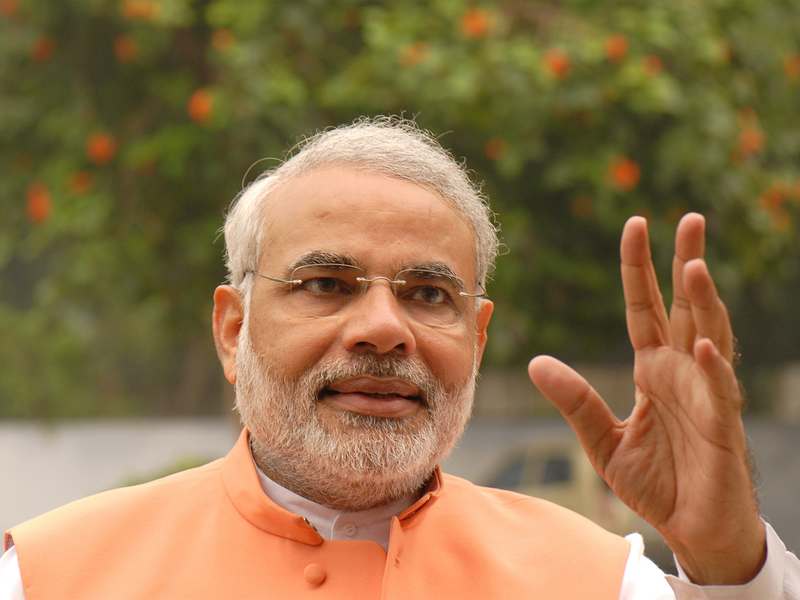
This is something that we should have written on a while back, but as they say it is better late than never.
In the annual budget of the government of India, presented earlier this month, the finance minister Arun Jaitley raised custom duties on a whole host of products. In his speech, Jaitley made it clear that this wasn’t a one-off thing, but a change in policy direction.
As he said: “In this budget, I am making a calibrated departure from the underlying policy in the last two decades, wherein the trend largely was to reduce the customs duty. There is substantial potential for domestic value addition in certain sectors, like food processing, electronics, auto components, footwear and furniture. To further incentivise the domestic value addition and Make in India in some such sectors, I propose to increase customs duty on certain items. I propose to increase customs duty on mobile phones from 15% to 20%, on some of their parts and accessories to 15% and on certain parts of TVs to 15%. This measure will promote creation of more jobs in the country.”
The customs duty has been raised on around 45 products. The maximum increase was in case of cranberry juice from 10% to 50%. (All you cranberry juice drinkers out there, maybe it is time to start appreciating the taste of chilled filtered water with a dash of lemon in it).
The idea as Jaitley explained is to create jobs within the country. With increased custom duties, imported goods will become expensive. This will make domestic goods competitive. As people buy more and more of domestic goods, the companies producing goods in India will do well. Once they do well, they will expand and create jobs in the process. Alternatively, because imports will become uncompetitive, the domestic companies can continue operating, and jobs can thus be saved. QED.
The problem with this argument is that it stinks of Nehruvian era economic policies, in particular import substitution, which was the norm in independent India, up until the economic reforms of 1991. Import substitution as a policy was introduced by Jawahar Lal Nehru and carried forward by Indira Gandhi, two individuals, the Bhartiya Janata Party keeps blaming for everything that is wrong in this country (even though we are four years into the term). At its simplest level, import substitution is basically an economic policy which promotes domestic production at the cost of imports. And it is an economic policy, which doesn’t work.
As the French economist Jean Tirole writes in Economics for the Common Good: “In economic matters too, first impressions can mislead us. We look at the direct effect of an economic policy, which is easy to understand, and we stop there. Most of the time we are not aware of the indirect effects. We do not understand the problem in its entirety. Yet secondary or indirect effects can easily make a well-intentioned policy toxic.”
What does Tirole mean here? Another French economist Frédéric Bastiat explains what secondary or indirect effects are, through the broken window fallacy.
Bastiat basically talks about a shopkeeper’s careless son breaking a pane of a glass window. He then goes on to say that those present would say: “It is an ill wind that blows nobody good. Everybody must live, and what would become of glaziers if panes of glass were never broken.”
The point being that if windows weren’t broken, how would those repairing windows, the glaziers that is, ever make a living. This seems like a fair question to ask, but things aren’t as simple as that.
As Bastiat writes in Essays on Political Economy: “This form of condolence contains an entire theory, which it will be well to show up in this simple case, seeing that it is precisely the same as that which, unhappily, regulates the greater part of our economical institutions.”
Bastiat then goes on to explain what exactly he means by this. Let’s say replacing the pane of the broken window costs 6 francs. This is the amount that the shopkeeper pays the glazier. If the shopkeeper’s son would not have broken the window there was no way that the glazier could have earned these six francs.
As Bastiat puts it: “The glazier comes, performs his task, receives his six francs, rubs his hands, and, in his heart, blesses the careless child. All this is that which is seen.” This leads us to conclude that breaking windows is a good thing because it leads to money circulating and those who repair broken windows doing well in the process.
Nevertheless, this is just one side of the argument. As Bastiat writes: “It is not seen that our shopkeeper has spent six francs upon one thing, he cannot spend them upon another. It is not seen that if he had not had a window to replace, he would, perhaps have replaced his old shoes, or added a book to his library. In short, he would have employed his six francs in some way which this accident prevented.”
How does this apply in the case of the Narendra Modi government increasing custom duties on a whole host of products? The seen effect of this, as already explained above, is that domestic Indian companies can compete with cheaper imports because of the custom duties being increased. This is likely to create jobs and if not, it is at least likely to save jobs. This is the first order effect or the seen effect.
What is the second order effect or the unseen effect? It is well worth remembering here that consumers only have so much money to spend. If cheaper imports no longer remain cheaper because of an increase in custom duties, the consumers have to pay a higher price for the goods made by domestic companies. Once this happens, they are likely to cut their spending on some other front.
The trouble is that this some other front on which consumers cut their spending, is not easily identifiable. Once consumers cut their spending on other fronts, some domestic businesses are not going to do well, and jobs will be lost there. The trouble is this is not something which is very obvious. It is an unseen effect.
If the consumers keep spending the same amount of money as before, they will end up cutting down on their savings, which isn’t necessarily a good thing. As Henry Hazlitt writes in Economics in One Lesson: “The fallacy… comes from noticing only the results that are immediately seen, and neglecting the results that are not seen.”
Another point that needs to be made here is that the domestic companies are organised well enough to lobby with the government. The end consumer never is.
Increasing customs duties is not a solution to creating jobs. For jobs to be created Indian firms need to be globally competitive. When companies produce for the global market, they need to compete with the best in the world. This automatically leads to a situation wherein the products which a company produces need to be globally competitive. On the other hand, when import substitution is the norm and companies need to produce just for the internal market, almost anything goes. This explains why the Indian corporate sector on the whole, has not been able to be competitive on the global front. It has still not been able to come out of the import substitution era. (We hope people do remember the Ambassador Car which had the same engine between 1944 and 1982.)
In order to be globally competitive, India needs to introduce a whole host of reforms, from labour law reforms to land reforms. It needs to start pricing electricity correctly. The governments need to control their fiscal deficits to ensure that they don’t push up interest rates in the long-term. Our education system needs a paradigm shift (We find this phrase absolutely cringeworthy, but nothing explains the situation better). The corporate bond market needs to function much better than it currently is. The number of inspectors that an average business needs to deal with has to come down. The paper work needs to be simplified. All these distortions in the system need to go.
Long story short—going back to Nehruvian economics is not going to do any good to the country. The sooner Narendra Modi understands this, the better it will be for India. India has suffered enough because of the mess initiated by the economic policies of Nehru and Indira Gandhi. And there is no point, going back to it.
The column originally appeared in Equitymaster on February 19, 2018.




